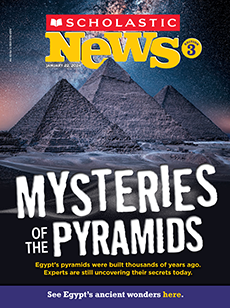On April 8, people across America will have their eyes on the sky. They’ll be watching an event called a total solar eclipse. This happens when the moon moves between Earth and the sun. The moon blocks nearly all the sun’s light, and day will seem like night.
Always remember to protect your eyes! You should never look directly at the sun, even during an eclipse. Rays from the sun can permanently damage your eyes.
Here are a few other tips:
- Never view the sun through a regular camera, binoculars, or a telescope without a special filter. That will cause instant eye injury.
- Don’t use regular sunglasses to watch an eclipse. They are not safe for looking at the sun.
- To safely watch an eclipse, you’ll need special viewing glasses, called eclipse glasses. They stop the sun’s harmful rays from reaching your eyes. You can also check with a parent about making a special viewing device at home.

